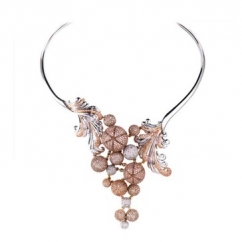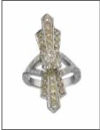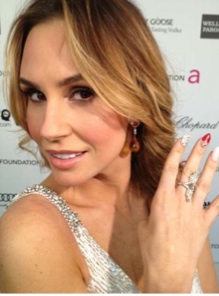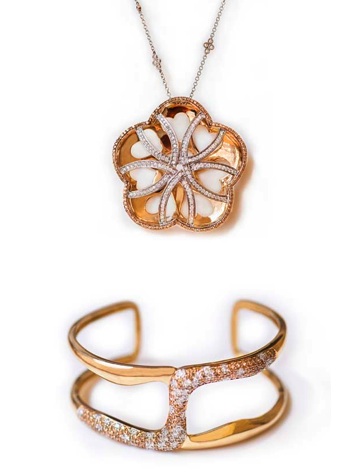Articles and News
BEYOND BRIDAL: SELLING DIAMOND FASHION TO MILLENNIALS | May 08, 2013 (0 comments)

New York, NY—The popular profile of the Gen-Y or Millennial consumer terrifies the fine jewelry industry. This demographic, which grew up on fast fashion and the latest gadget, cares far more about design than intrinsic materials, and they don’t want to pay full price for anything.
Luxury jewelers agree the Millennial consumer is willing to spend for bridal jewelry. The typical bridal spend at a luxury jewelry store is approximately $7,000, though a 2011 study conducted by the XO Group (publishers of TheKnot.com) says that figure could be closer to $8,000, and an exclusive Centurion survey of luxury jewelers found more than ¼ of respondents say their best-selling bridal is more than $10,000.
For the total industry, TheKnot.com says the 2012 average engagement ring spend was $5,431, but other sources put the total industry average closer to $3,500 and $4,000 when sales at low-end retailers like Walmart are taken into account.
Regardless, jewelers still need to get Millennials into the store more than once in a lifetime, and that may require some serious re-thinking about their other merchandise. But how do you sell to a customer who's just as happy with brass and glass as gold and diamonds, as long as the piece looks good?
Rebecca Foerster, who heads Rio Tinto Diamonds’ U.S. office, has an extensive marketing background in both fine jewelry and in the beauty (cosmetics) industry. Rio Tinto, which owns Australia’s Argyle mine, is launching a new collection of diamond fashion jewelry designed to appeal to a Millennial-age consumer. While the Argyle mine is famous for its pink diamonds, the vast production of the mine is lower value small stones, including champagne and grays. The new collections are focused on incorporating both creative design using these colors and messaging to position diamond fashion jewelry as both interesting and accessible. The first initiative was to showcase the Argyle Diamond Collection at the 2013 Oscars (Evelyn Huang's "Bulles de Champagne Collier," top of page, is from that collection). Additional initiatives will be unveiled at the upcoming JCK Show in Las Vegas.
In an exclusive interview, The Centurion Newsletter asked Foerster to share her insight into reaching this much-coveted Millennial consumer and translating their love of fashion into long-term diamond jewelry consumption.
The Centurion Newsletter: Luxury in the 1990s and early 2000s was democratized, but since the recession many luxury brands returned to making exclusive, stratospherically priced goods for those who can afford it. Is this a good strategy, or is it better for luxury companies to continue to offer something attainable to attract younger consumers and build loyalty?
Rebecca Foerster: Real luxury isn’t always about price. It’s about quality, design, and most of all, relevancy to the consumer’s need. Just because something is made from resin and crystal doesn’t mean it isn’t luxury. As long as it’s the right value proposition, it’s ok. I think it’s a sound strategy to bring in a Gen-Y customer now, whose values can’t always afford $2,500 (or more), to build a loyalty to brands and to you.
The Centurion: Sometimes it’s hard for a luxury jeweler to wrap his or her head around selling crystal and resin as “fine” jewelry.
RF: The bridge between ‘fine’ and ‘fashion’ jewelry is becoming increasingly blurred. It’s not just about the components anymore. As long as the brand has the right story, the right values, the right quality, and the right design, it will have the right perceived value to the customer.
The Centurion: Let’s talk about those components. How does a jeweler who’s selling crystal and resin as fine jewelry then switch to selling diamonds on the basis of their intrinsic value?
RF: As long as [a piece] has diamonds in it, it has value! The question of intrinsic value is different today. Today it’s about whether I can relate to the piece, whether I love how it looks, whether it reflects who I am, whether it makes me feel special. People don’t buy an iPad because of its intrinsic value; they buy it because it reflects who they are. If you’re going to bring the customer into the diamond franchise, then diamonds have to be more of a lifestyle purchase, more interesting, not my mother’s jewelry.


The Skyline Collection Tower ring by Kristin Hanson features 3.71 ctw. of natural green-gray diamonds set in platinum. Keltie Colleen from omg! Insider wore it for red carpet reporting during the 2013 Oscars. Photos: Rio Tinto
The Centurion: So it’s really about how the diamonds elevate the other materials, not that the other materials make the piece less precious?
RF: Argyle’s new collection is all about mixed media. Everything in it has diamonds. It may be diamonds and wood, but it’s cool design and it has diamonds. This hybrid of what we define as fine and fashion jewelry still gives the feel and quality of luxury, but it’s more affordable because it’s made of different materials. But at least start educating the customer about diamonds so that they want to upgrade in time!
The Centurion: How does a luxury jeweler do this without confusing existing customers?
RF: It’s the way you merchandise the store. You put this merchandise in a section of the store, you call it something different, and you read a customer when they come in so you direct them to the right part of the store and they don’t feel like they’re ‘trading down.’ I’ve been to a number of luxury jewelers that you think would be only high-end and high priced, but they now carry lines like Alexis Bittar, or designer silver, and it’s been very successful.

"Nature's Beauty," necklace and bracelet featuring champagne diamonds, from Argyle's sustainable jewelry collection. Photo courtesy Rio Tinto via Pricescope.com
The Centurion: What marketing concepts from the cosmetic industry do you think would be good to adapt to jewelry?
RF: The beauty industry is amazing at relating to current fashion with a new color story every season. In jewelry, you wouldn’t necessarily do that with a whole new collection every season, but you could pull from your existing inventory and set up a display around the trends. For instance, if the trend is orange and turquoise, find every piece that’s even remotely orange or turquoise and set up a display with all of it. Make a mood board and show that you’re in tune with the trends.
Another thing is training. There’s no better training anywhere than in the cosmetic industry. Most of the time the cosmetics companies employ the people behind the [department store] counters, but jewelers can have spiffs or incentive programs for their salespeople to become advocates for the products.
I’d also love to see the jewelry industry do more direct mail and customer loyalty programs, and pre-sale or preview programs. Cosmetics companies often do special events with “pre-selling” to customers. Jewelers can do that by allocating first options on new pieces to the right customers for those pieces. It’s all about relationship marketing.
Finally, special events are always good. Educate consumers about diamonds, and the history and journey that a diamond takes from mine all the way to the setting in their jewelry. I think people [in the industry] take it for granted that the customer knows all this, but they don’t, and it’s a great story. People buy diamonds that have a story.







